Eye exams

Dear Customers, Our optical tests are tied to a purchase from our optics. We do not perform eye exams only for diopter and eye state information. For this purpose, please refer to an ophthalmology cabinet. Our task is to specify a precise diopter to make you perfect glasses!
Increasingly more and more people of all ages complain of headaches, visual fatigue, weight in the area around the eyes, redness and burning, excessive dryness or too much tearing, feeling of sand in the eyes, blurring the image away or close. Pay attention to these symptoms and immediately visit an eye specialist to determine the cause.
We have a computer client program in Vision Care Optics, in which each of our clients has their own profile for their diopters, glasses, lenses, contact lenses, and accessories purchased by us on different dates. This way, our customers are confident that all the information about their eyes, eyeglasses and contact lenses is stored and maintained correctly and may be at theirs and our help at any time when necessary!
We issue a client card to each of our clients containing detailed information about dioptres, manufacturer and type of contact lenses and replacement period and manufacturer, type and coverage of the dioptric lenses.
This way we can be as useful as possible to all of our clients!
In the refractive corner in Vision Care optics we make precise eye exams with the first in Bulgaria TONOREF ™ III:
– Visual tests for determining the diopter with maximum accuracy / refraction /
– Tracking of Optical Mesh Transparency
– Contactless measurement of intraocular pressure / tonometry /
– Contactless measurement of corneal thickness / patchimetry /
– Corneal Radius Measurement / Keratometry / for precise contact lens adjustment
– Measuring the volume of accommodation / the ability of the eye to focus clearly on close objects due to the amount of dioptres with which the intraocular lens manages to increase its refractive power, moving from rest to maximum tension /
See eye exam pricing and book a test from here.
Auto Ref / Kerato / Tono / Pachymeter TONOREF™ III



TONOREF ™ III is the latest generation of measuring equipment of the Japanese giant NIDEK CO., LTD. – world leader in the design, production and distribution of ophthalmic and optometric equipment and peripheral processing of diopter lenses.
TONOREF ™ III combines the functionality of an auto-refractometer, an auto-keratometer, a contactless tonometer and a contactless patchimeter in one device.
NIDEK is the first manufacturer to introduce this unique combination into a device with high precision measurement of clinically relevant parameters.
With TONOREF ™ III, complex measurements can be performed quickly and easily, without compromising patient comfort and maximum clinical efficiency.
The device has a non-contact patchimeter to TONOREF ™ III. This function allows automatic calculation of corrected intraocular pressure (IOP) based on subjective intraocular pressure and corneal thickness data.
If we experience deviations from the reference values in the intraocular pressure tests, we will direct you to an ophthalmologist for further studies and appointment of supportive therapy and treatment.
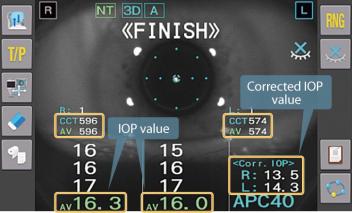
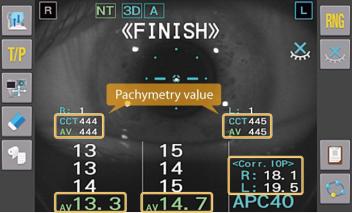
We measure the volume of accommodation
In addition, TONOREF ™ III also includes measurement of the transparency of the optical media of the eye.
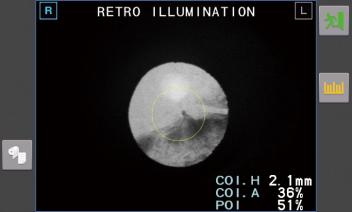
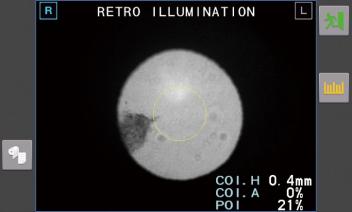
With these new features, TONOREF ™ III delivers maximum patient comfort and maximum precision in measurement.

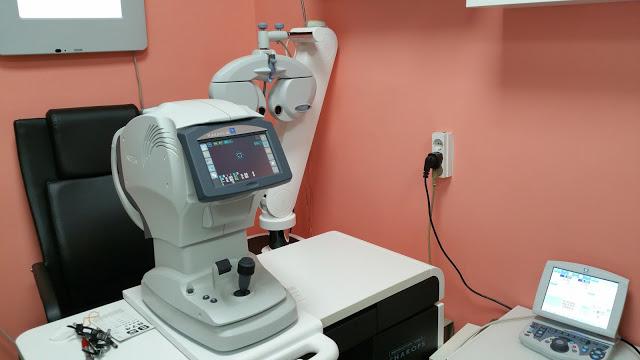

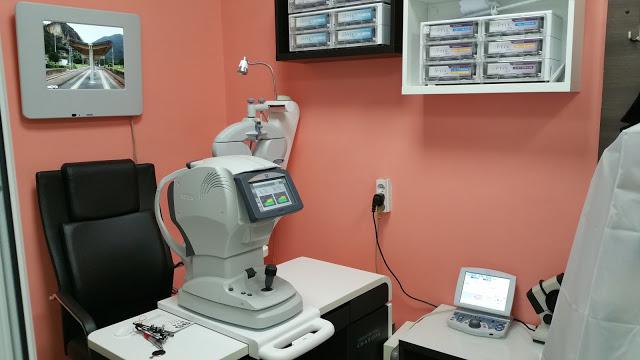
REFRACTIVE EYE IMPERFECTIONS
Refraction is called the deflection of light rays when they move from one environment to another.
The refractive media in the eye are several: cornea, lens, eye fluid and vitreous body.
Each one has its own refractive index, with the largest refractive force of the cornea around + 45 dioptres, followed by the intraocular lens – about + 19 diopters. In order to obtain a clear image of the subject under observation, there must be a match between the refraction of the light rays in the optical system of the eye and the length of the eyeball. The normal state is called emetropia. When such a match is missing, the resulting image is unclear.
MYOPIA (NEARSIGHTEDNESS)
Nearsightedness (myopia) is a type of refractive anomaly of the human eye and occurs at a longer length of the eyeball or with a greater refractive power of the cornea and the ophthalmic lens. The image of an infinitely remote object is produced in front of the retina rather than on it. Therefore, only close objects are clearly visible. It usually occurs at school age. Corrected with concave lenses, which scatter the parallel beam of rays coming into the eye, thus shifting the image of the observed object onto the retina.
HYPERMETROPY (FARSIGHTEDNESS)
Dyspnoea (Farsightedness) has reduced visual sharpness due to lesser length of the eyeball or less refractive power of the ophthalmic lens. The image occurs behind the retina and, if the anomaly is weak, it is compensated by the ciliar muscles’ accomodation. As aging progresses, accommodation gets weaker, causing age farsightedness (presbyopia). Childhood farsightedness is usually a congenital anomaly of the refractive power of the eye and affects visual sharpness when viewing far away and to a much greater extent at a close distance. When a diagnosis of hypermetropia is established, permanent wear glassess are prescribed. Farsightedness is corrected by protruding / plus / lenses that shift the image of the observed object forward.
PRESBYOPIA
Presbyopia (“age / old / farsightedness”) usually begins to develop from 40-45 years of age and this process continues until the age of 60. In the initial stage of presbyopia development, alterations result in visual sharpness being reduced when viewing nearby (at work at a distance of 35-50 cm) objects. With further development of presbyopia, these changes can also reduce visual sharpness when viewing far objects. Depending on the level of presbyopia development, close-range glassess, mid-range (70cm – 1.5m) and distant viewing glasses are prescribed. At this age, each person needs to check their eyesight and adjust their glasses in a couple of years.
ASTIGMATISM
Astigmatism is yet another of the anomalies in the refractive power of the eye. It occurs due to the uneven curvature of the cornea or the intraocular lens in the different sections (e.g. vertically along the optical axis of the eye and horizontally along the optical axis of the eye). Therefore, the image can not be focused on the retina – for example, if the rays coming from the object in the vertical plane are focused precisely on the retina, those from the horizontal are focused before or after it. Astigmatism may be corneal, lense, myopic, hypermetropic, and mixed. There is also a inherited and acquired / traumatic or postoperative / astigmatism. With astigmatism, it is necessary to wear glasses constantly, taking into account the individual features in the refractive capability of each eye.
HOW TO PREPARE FOR AN OPTICAL TEST FOR DIOPTER DETERMINATION
1. If you wear contact lenses, do not put them in your eyes on the day of the eye test.
2. Carry with you all the documents from the last eye test you have done.
3. If you have glasses, bring them when you come for an eye test.
4. If you have glasses, bring with you all the documents accompanying your glasses (glass packaging, warranty card or customer card) certifying the type and material of the glasses, coatings and dioptres.
Our Optics is now a member of the Association of Bulgarian Optometrists and Opticians
